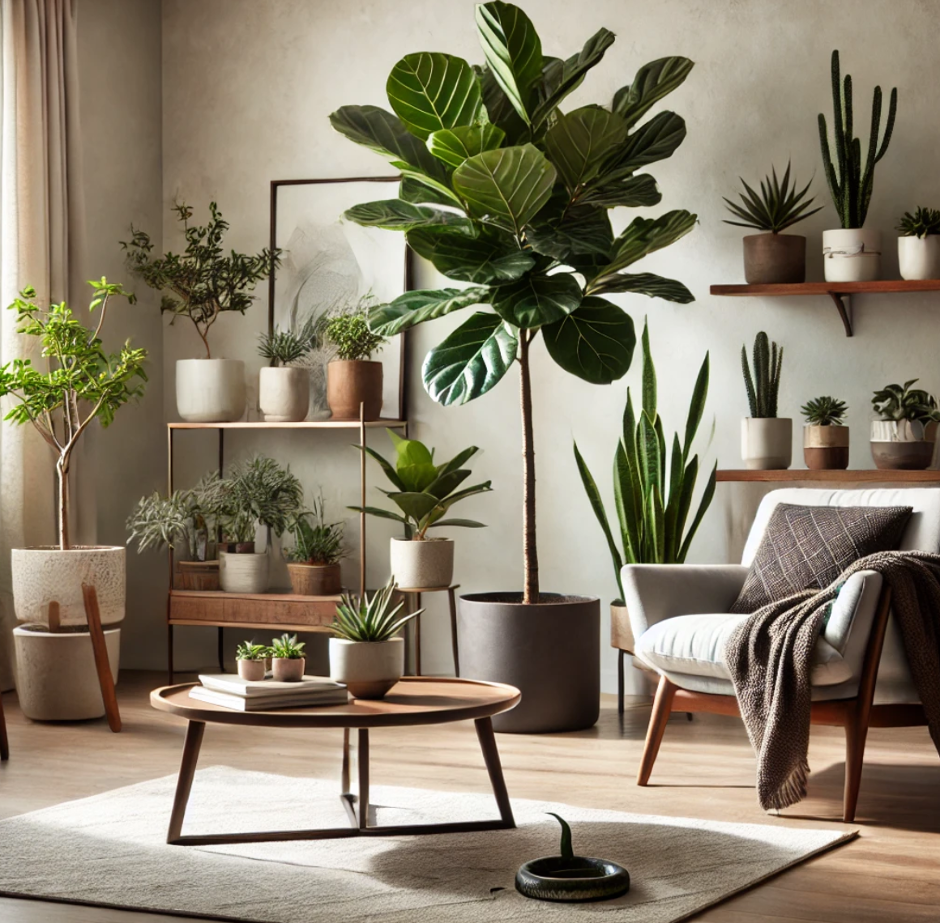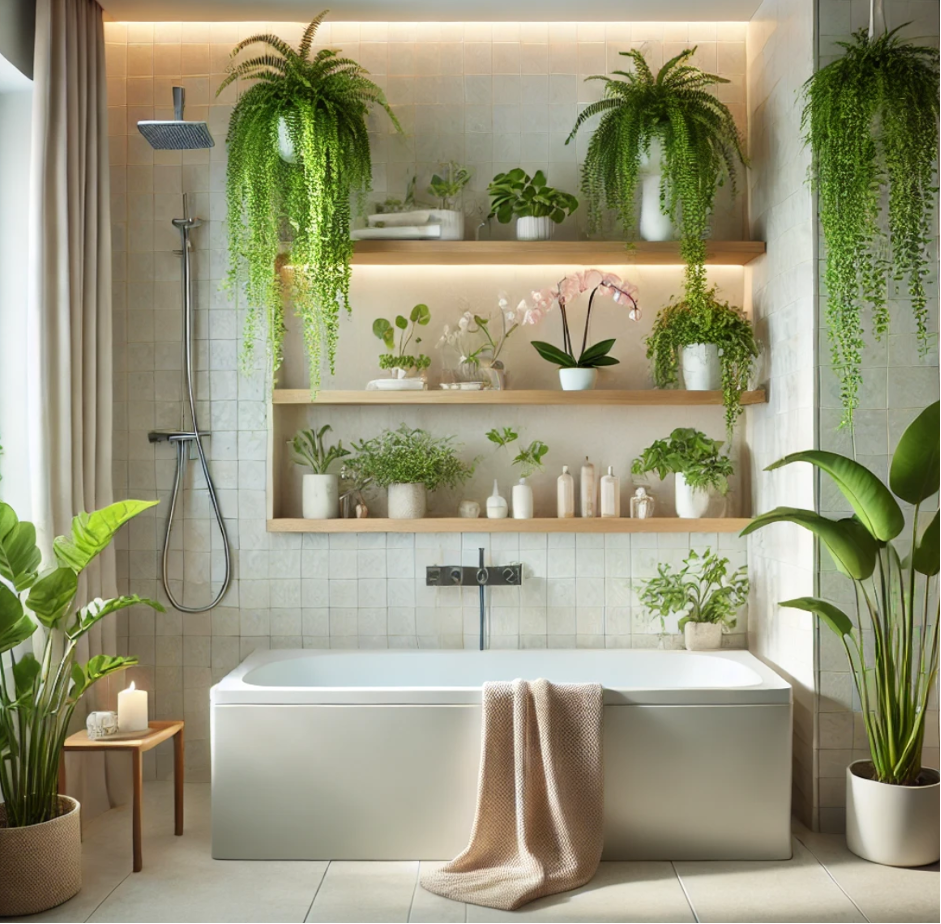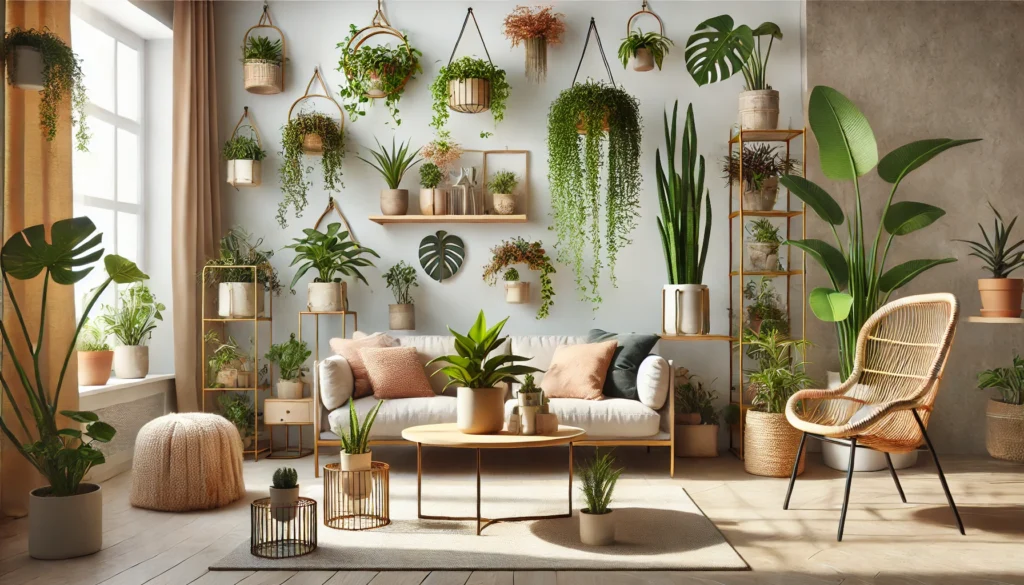Indoor plants have become a must-have element for home decor. They not only add a touch of nature to your space but also offer numerous health benefits such as improving air quality and boosting mood. Whether you’re new to plant styling or a seasoned enthusiast, this guide will help you master the art of incorporating plants into your home design. We’ll explore different styling techniques, plant choices, and tips to ensure your indoor jungle thrives while complementing your decor.
Why Plants are Essential for Home Styling
Indoor plants are versatile and can fit into any style, from modern minimalist spaces to bohemian sanctuaries. They introduce life, texture, and color, making even the simplest spaces feel cozy and inviting. Plants can soften hard lines, fill empty corners, and make your home feel more personal. Additionally, research shows that plants reduce stress, improve concentration, and even help purify the air, making them not just a stylish choice but also a health-conscious one.
Key Benefits of Indoor Plants:
- Improved air quality: Plants like snake plants and peace lilies filter toxins and improve oxygen levels.
- Enhanced mood and productivity: Studies show that being surrounded by greenery can reduce stress and increase happiness.
- Added texture and color: Different types of plants offer varying shapes, sizes, and hues, adding depth to your space.
Choosing the Right Plants for Your Home
Before diving into plant styling, it’s important to choose the right plants for your space and lifestyle. Consider factors like light availability, maintenance, and the overall aesthetic you’re going for.
Low-Maintenance Plants for Beginners:
- Snake Plant: Also known as “Mother-in-Law’s Tongue,” this plant is nearly indestructible and thrives in low light.
- ZZ Plant: Perfect for low light and can go weeks without water, making it ideal for busy homeowners.
- Pothos: A vining plant that grows well in a variety of light conditions and is easy to propagate.
High-Impact, Low-Effort Plants:
- Fiddle Leaf Fig: A statement plant that can grow tall and add a dramatic effect to any room.
- Monstera Deliciosa: Known for its iconic split leaves, this plant thrives in indirect light and creates a lush, tropical vibe.
- Rubber Plant: With its broad, shiny leaves, this plant adds a bold look and is relatively easy to care for.
Styling Tips for Different Rooms
Each room in your home offers different opportunities for plant styling. Here are some ideas to get you started:
Living Room

The living room is often the central hub of the house, making it the perfect place to showcase larger, statement plants. Consider using:
- Tall Plants: Place a large potted plant, like a fiddle leaf fig or bird of paradise, in an empty corner to add height and visual interest.
- Plant Stands and Shelves: Use plant stands or floating shelves to display smaller plants like succulents, pothos, or spider plants. Grouping plants at different heights can create a layered, balanced look.
- Coffee Table Centerpiece: A small, low-maintenance plant like a snake plant or a cluster of succulents makes for a stylish centerpiece on a coffee table.
Bedroom

Your bedroom should be a calm, restful space, and plants can help foster that peaceful atmosphere. Opt for:
- Air-Purifying Plants: Snake plants, peace lilies, and spider plants not only enhance your bedroom’s aesthetics but also help clean the air, contributing to better sleep.
- Small Nightstand Plants: A small, low-maintenance plant such as a succulent or cactus adds a touch of nature without overwhelming your bedside table.
- Hanging Plants: If you’re short on space, hanging plants like ivy or string of hearts are perfect for adding greenery without taking up floor space.
Kitchen

Kitchens are an ideal spot for smaller, functional plants like herbs. They are practical and can be used in cooking, while still adding charm to the room.
- Herb Garden: Create a mini indoor herb garden with basil, mint, and rosemary on your windowsill or counter. This adds greenery while providing fresh herbs for your meals.
- Hanging Planters: Utilize hanging planters to maximize counter space and keep plants away from busy kitchen surfaces.
- Succulents or Small Ferns: Place small pots of succulents or ferns on open shelving to complement your kitchen’s design without cluttering the space.
Bathroom

Bathrooms can be tricky for plant styling due to moisture levels, but certain plants thrive in the humidity.
- Humidity-Loving Plants: Ferns, orchids, and pothos do well in humid environments and can add a spa-like feel to your bathroom.
- Shelf Styling: Place small plants on open shelves or on the edge of the bathtub for a lush, green accent.
- Shower Plant Hangers: You can also hang plants near the shower for a tropical feel.
Creative Ways to Display Your Plants
In addition to picking the right plants, how you display them can make a big difference. Here are a few creative ways to showcase your plants:
Plant Walls
For a striking display, consider creating a living wall. This is especially effective in small spaces where floor space is limited. You can install wall-mounted planters or floating shelves to build a vertical garden, mixing plants of different textures and sizes to create a visually stunning focal point.
Grouping Plants
Group plants of varying sizes and shapes to create a dynamic arrangement. Use a mix of floor plants, tabletop plants, and hanging plants to build a mini indoor jungle. Grouping plants together also helps increase humidity levels, which many plants love.
Unique Planters
Your choice of planter can also be a stylish statement. Consider using terracotta pots for a classic look, ceramic pots for a modern touch, or even baskets for a more rustic, bohemian feel. Play with different colors and textures to complement your home’s design.
Macramé Hangers
For a boho-chic aesthetic, try hanging plants in macramé hangers. These stylish holders can be hung from the ceiling or wall, allowing trailing plants like pothos or string of pearls to cascade beautifully.
Plant Care Tips
To ensure your indoor plants thrive, it’s important to follow some basic care guidelines:
- Light: Make sure to choose plants suited for the natural light available in your home. Some plants require bright, indirect light, while others can tolerate low light conditions.
- Watering: Overwatering is a common mistake. Always check if the soil is dry before watering and ensure pots have drainage holes to prevent root rot.
- Humidity: Some plants, like ferns and calatheas, require higher humidity. You can increase humidity by misting them or placing a small humidifier nearby.
- Repotting: Plants need room to grow, so repot them every year or two. Look for signs like roots growing out of the drainage holes or the plant becoming too top-heavy for its pot.
Final Thoughts
Indoor plants are an excellent way to transform your home, adding both beauty and functionality. Whether you’re creating a relaxing bedroom sanctuary or a lush living room, the right plants and styling techniques can make all the difference. With the tips and ideas shared here, you can confidently select and arrange plants that not only thrive in your home but also elevate its design. Happy styling!

